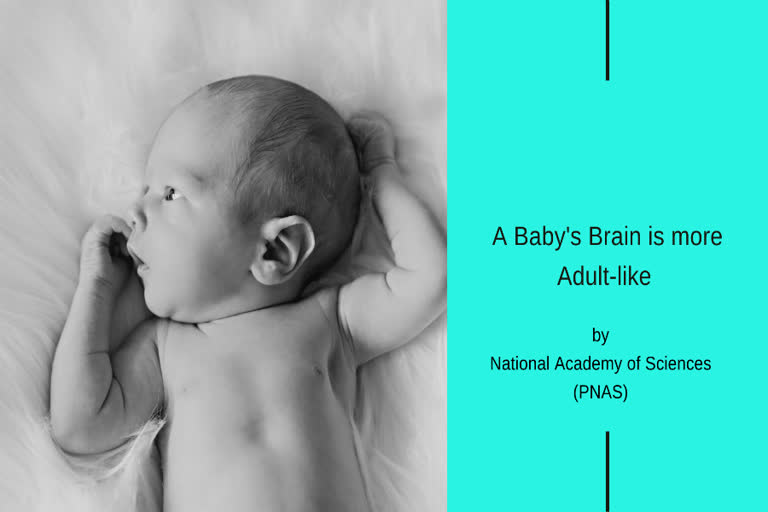As young as six days old baby's brain appears hardwired for the specialised tasks of seeing faces and seeing places, show brain scans of newborns which explains why within hours of birth, a baby's gaze is drawn to faces.
The findings, published in the journal Proceedings of the National Academy of Sciences (PNAS), provide the earliest peek yet into the visual cortex of newborns, using harmless functional magnetic resonance imaging (fMRI).
"We've shown that a baby's brain is more adult-like than many people might assume," said Frederik Kamps, who led the study as a PhD candidate at Emory University in the US.
"Much of the scaffolding for the human visual cortex is already in place, along with the patterns of brain activity, although the patterns are not as strong compared to those of adults," said Kamps who has since graduated from Emory and is now a post-doctoral fellow at MIT.
Understanding how an infant's brain is typically organised may help answer questions when something goes awry, said Daniel Dilks, Associate Professor of Psychology, and senior author of the study.
"For example, if the face network in a newborn's visual cortex was not well-connected, that might be a bio marker for disorders associated with an aversion to eye contact. By diagnosing the problem earlier, we could intervene earlier and take advantage of the incredible malleability of the infant brain," Dilks said.
For decades, scientists have known that the adult visual cortex contains two regions that work in concert to process faces and another two regions that work together to process places.
More recent work shows that the visual cortex of young children is differentiated into these face and place networks.
And in a 2017 paper, Dilks and colleagues found that this neural differentiation is in place in babies as young as four months.
For the current paper, the average age of the newborn participants was 27 days.
"We needed to get closer to the date of birth in order to better understand if we are born with this differentiation in our brains or if it's moulded by experience," Dilks said.
Thirty infants, ranging in age from six days to 57 days, participated in the experiments while sleeping.
To serve as controls, 24 adults were scanned in a resting state -- awake but not stimulated by anything in particular.
Also read: iQOO3 is available online
The scanner captured intrinsic fluctuations of the brain for both the infants and adults.
The results showed the two regions of the visual cortex associated with face processing fired in sync in the infants, as did the two networks associated with places.
The infant patterns were similar to those of the adult participants, although not quite as strong.
"That finding suggests that there is room for these networks to keep getting fine-tuned as infants mature into adulthood," Kamps said.
"We can see that the face networks and the place networks of the brain are hooked up and talking to each other within days of birth," Dilks said.
( Inputs from IANS)



